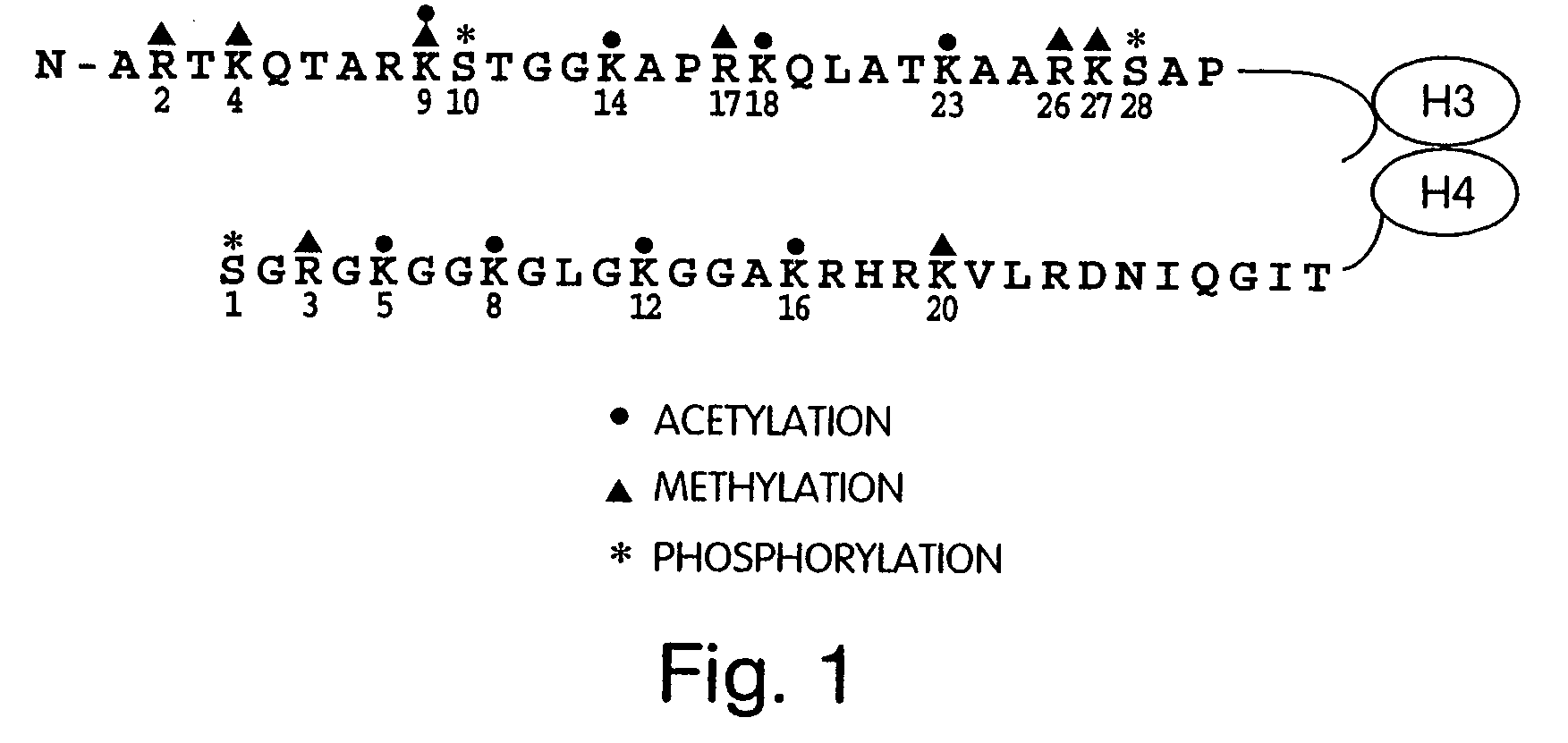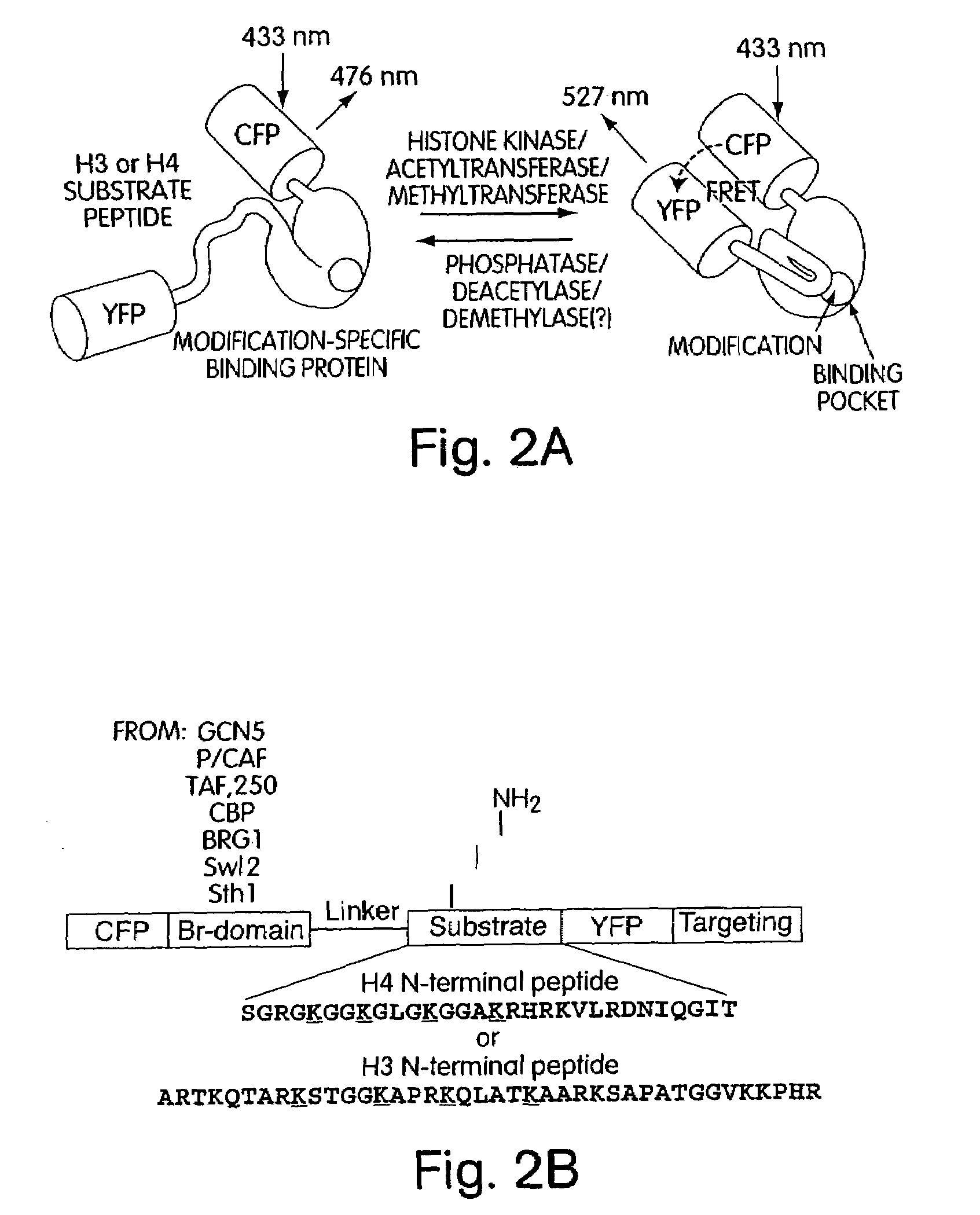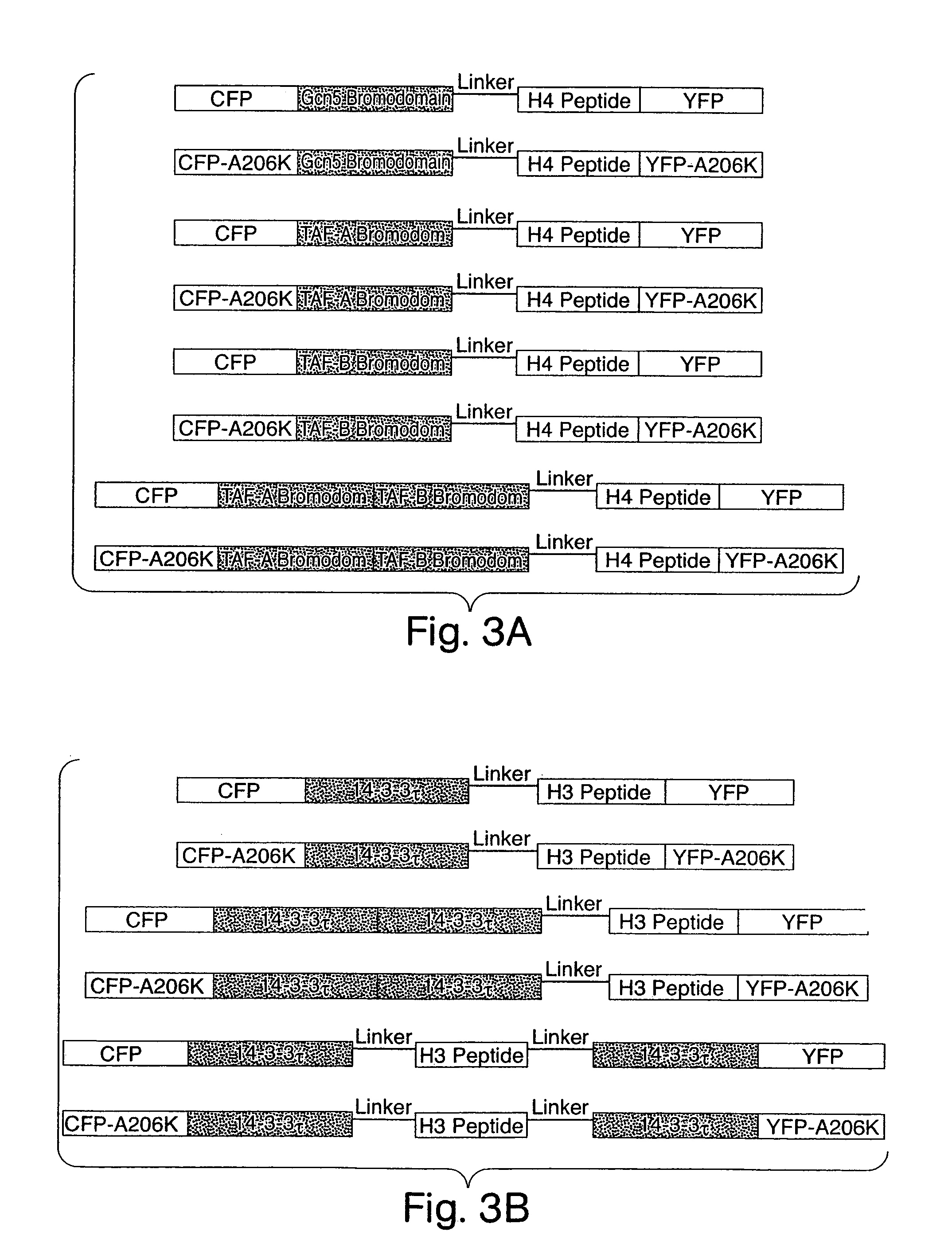Genetically encoded fluorescent reporters of kinase, methyltransferase, and acetyl-transferase activities
- Summary
- Abstract
- Description
- Claims
- Application Information
AI Technical Summary
Benefits of technology
Problems solved by technology
Method used
Image
Examples
example 1
Three Classes of Noninvasive Cell-State Indicators with Simple, Real-Time Optical Readout.
Introduction
[0164]Indicators for kinases, acetyltransferases, and methyltransferases have been developed. Such indicators are also referred to herein as fusion protein reporters. In the design of the fusion protein reporter (FIG. 2A), a peptide substrate was fused to a phosphopeptide-specific binding protein and the pair was sandwiched between a FRET-capable pair of FPs (CFP and YFP). Phosphorylation of the peptide substrate by a kinase causes intramolecular complexation between the phosphopeptide and the binding domain, leading to a change in distance between the CFP and YFP and therefore resulting in a change in FRET. High specificity can be programmed into this indicator by tuning the substrate sequence or by fusing the indicator to localization domains, and the overall design is highly modular and generalizable. In addition, reporter sensitivity is high. The technology is also minimally inv...
example 2
Methods
Library-Based Reporter Development and Optimization
[0173]The above strategies result in development and optimization of a wide variety of fusion proteins incorporating fluorescent moieties, enzyme substrates, and modification-specific binding domains. Although successful chimeras are found by designing and expressing constructs one by one, it is faster and more efficient to devise high-throughput strategies for systematically generating and testing diverse libraries of such constructs. Libraries of reporter mutants are therefore screened by both in vitro and in vivo methods. For in vitro screening, the DNA libraries are transformed into E. coli and grown on antibiotic plates. Using an automated colony-picker, fluorescent clones (indicating that CFP and YFP are present and properly folded) are selected and transferred into 96-well plates containing growth media. A protein expression robot, available at the Whitehead Institute, Cambridge, Mass., is used to culture the bacteria ...
example 3
Use of Fusion Protein Reporters to Study the Mechanism of Heterochromatin Duplication during Mammalian Cell Division.
Epigenetic Inheritance of Histone Modification Patterns
Introduction
[0176]One process in chromatin research that remains almost entirely opaque is that of epigenetic pattern duplication during cell division. It is known that genes that are silent in a parent cell often remain silent in the daughter cells after cell division. On a larger scale, entire heterochromatin domains (chromosomal regions that remain intensely stained throughout the cell cycle and contain large numbers of silenced genes) and euchromatin domains (“open” chromatin containing more actively expressed genes) are preserved during the process of cell division. What is the molecular mechanism for the accurate duplication of these epigenetic patterns? Unlike DNA, for which there is a natural base complement system to form the basis of a replication mechanism, epigenetic modifications such as acetylation a...
PUM
| Property | Measurement | Unit |
|---|---|---|
| Resonance energy | aaaaa | aaaaa |
| Fluorescence | aaaaa | aaaaa |
| Yellowness index | aaaaa | aaaaa |
Abstract
Description
Claims
Application Information
 Login to View More
Login to View More - R&D
- Intellectual Property
- Life Sciences
- Materials
- Tech Scout
- Unparalleled Data Quality
- Higher Quality Content
- 60% Fewer Hallucinations
Browse by: Latest US Patents, China's latest patents, Technical Efficacy Thesaurus, Application Domain, Technology Topic, Popular Technical Reports.
© 2025 PatSnap. All rights reserved.Legal|Privacy policy|Modern Slavery Act Transparency Statement|Sitemap|About US| Contact US: help@patsnap.com



